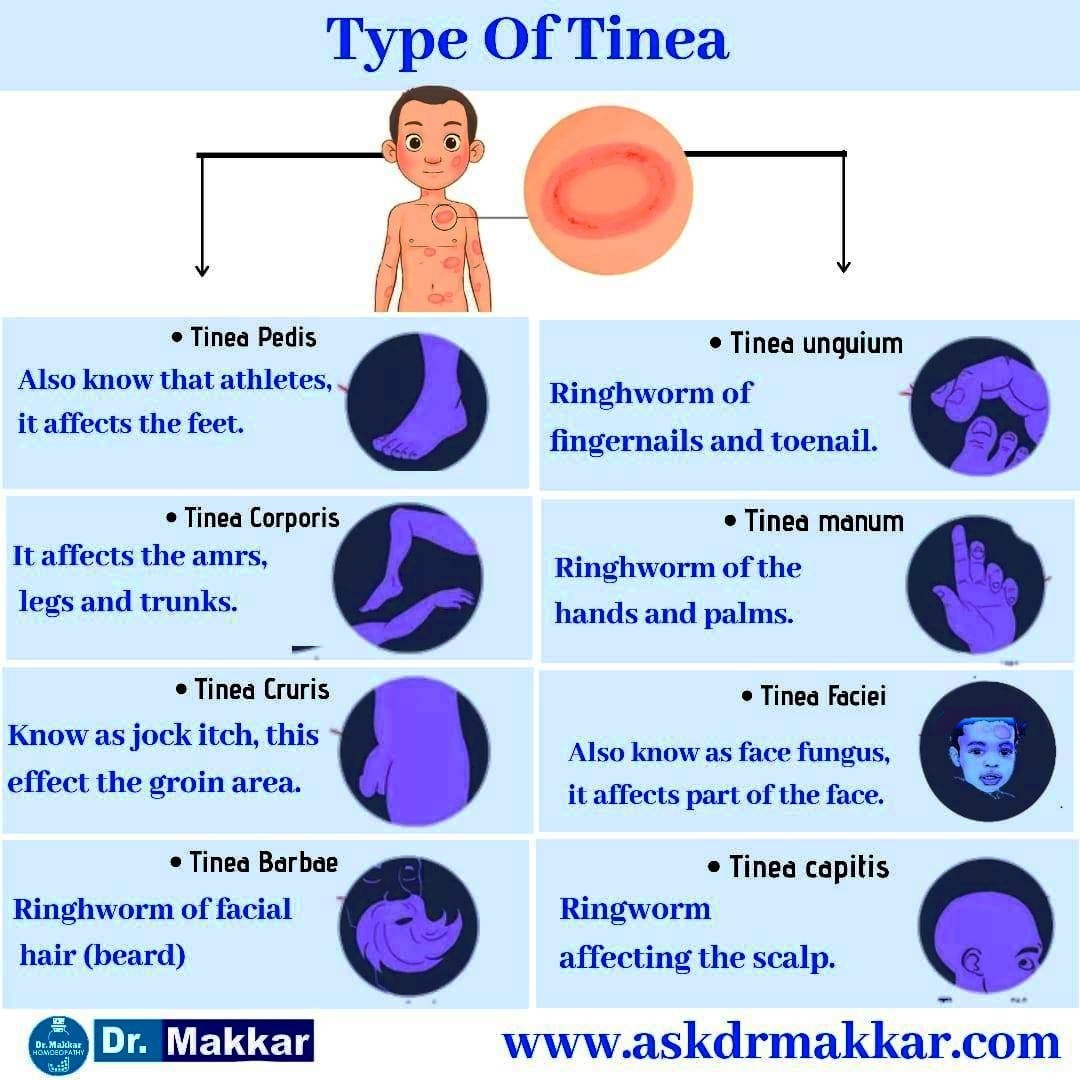Tinea pedis (foot)
Athlete's foot (also known as "ringworm of the foot",tinea pedum, and "moccasin foot") is a common and contagious skin disease that causes itching, scaling, flaking, and sometimes blistering of the affected areas. Its medical name is tinea pedis, a member of the group of diseases or conditions known as tinea, most of which are dermatophytoses (fungal infections of the skin), which in turn are mycoses (broad category of fungal infections). Globally, athlete's foot affects about 15% of the population.
Tinea pedis is caused by fungi such as Epidermophyton floccosum or fungi of the Trichophyton genus including T. rubrum and T. mentagrophytes.These fungi are typically transmitted in moist communal areas where people go barefoot, such as around swimming pools or in showers, and require a warm moist environment like the inside of a shoe to incubate. Fungal infection of the foot may be acquired (or reacquired) in many ways, such as by walking in an infected locker room, by using an infested bathtub, by sharing a towel used by someone with the disease, by touching the feet with infected fingers (such as after scratching another infected area of the body), or by wearing fungi-contaminated socks or shoes.
Tinea manuum (hand)
Tinea manuum (or tinea manus) is a fungal infection of the hand. It is typically more aggressive than tinea pedis but similar in look. Itching, burning, cracking, and scaling are observable and may be transmitted sexually or otherwise, whether or not symptoms are present.
Tinea cruris (groin)
Tinea cruris, also known as "crotch itch", "crotch rot", "Dhobie itch", "eczema marginatum", "gym itch","jock itch", "jock rot", "scrot rot" and "ringworm of the groin"is a dermatophyte fungal infection of the groin region in any sex, though more often seen in males. In the German sprachraum this condition is called tinea inguinalis (from Latin inguen = groin) whereas tinea cruris is used for a dermatophytosis of the lower leg (Latin crus).
Tinea cruris is similar to, but different from Candidal intertrigo, which is an infection of the skin by Candida albicans. It is more specifically located between intertriginous folds of adjacent skin, which can be present in the groin or scrotum, and be indistinguishable from fungal infections caused by tinia. However, candidal infections tend to both appear and disappear with treatment more quickly. It may also affect the scrotum.

Tinea corporis
Tinea corporis (also known as "ringworm", tinea circinata, and tinea glabrosa) is a superficial fungal infection (dermatophytosis) of the arms and legs, especially on glabrous skin; however, it may occur on any part of the body.
Tinea capitis
Tinea capitis (also known as "Herpes tonsurans", "Ringworm of the hair, "Ringworm of the scalp," "Scalp ringworm",and "Tinea tonsurans") is a superficial fungal infection (dermatophytosis) of the scalp. The disease is primarily caused by dermatophytes in the Trichophyton and Microsporum genera that invade the hair shaft. The clinical presentation is typically single or multiple patches of hair loss, sometimes with a 'black dot' pattern (often with broken-off hairs), that may be accompanied by inflammation, scaling, pustules, and itching. Uncommon in adults, tinea capitis is predominantly seen in pre-pubertal children, more often boys than girls.
Tinea faciei
Tinea faciei is a fungal infection of the face.
It generally appears as a red rash on the face, followed by patches of small, raised bumps. The skin may peel while it is being treated.
Tinea faciei is contagious just by touch and can spread easily to all regions of skin.
Tinea barbae (beard)
Tinea barbæ (also known as "Barber's itch," "Ringworm of the beard," and "Tinea sycosis" is a fungal infection of the hair. Tinea barbae is due to a dermatophytic infection around the bearded area of men. Generally, the infection occurs as a follicular inflammation, or as a cutaneous granulomatous lesion, i.e. a chronic inflammatory reaction. It is one of the causes of folliculitis. It is most common among agricultural workers, as the transmission is more common from animal-to-human than human-to-human. The most common causes are Trichophyton mentagrophytes and T. verrucosum.
Tinea imbricata (overlapping pattern)
Tinea imbricata (also known as "Tokelau") is a superficial fungal infection of the skin limited to southwest Polynesia, Melanesia, Southeast Asia, India, and Central America.
Tinea nigra
Tinea nigra (also known as "superficial phaeohyphomycosis,"and "Tinea nigra palmaris et plantaris") is a superficial fungal infection that causes dark brown to black painless patches on the palms of the hands and the soles of the feet.
Tinea versicolor
Tinea versicolor (also known as dermatomycosis furfuracea, pityriasis versicolor, and tinea flava) is a condition characterized by a skin eruption on the trunk and proximal extremities. Recent research has shown that the majority of tinea versicolor is caused by the Malassezia globosa fungus, although Malassezia furfur is responsible for a small number of cases. These yeasts are normally found on the human skin and only become troublesome under certain circumstances, such as a warm and humid environment, although the exact conditions that cause initiation of the disease process are poorly understood.
Tinea incognito
Tinea incognito is a fungal infection (mycosis) of the skin caused by the presence of a topical immunosuppressive agent. The usual agent is a topical corticosteroid (topical steroid). As the skin fungal infection has lost some of the characteristic features due to suppression of inflammation, it may have a poorly defined border, skin atrophy, telangiectasia, and florid growth. Occasionally, secondary infection with bacteria occurs with concurrent pustules and impetigo.